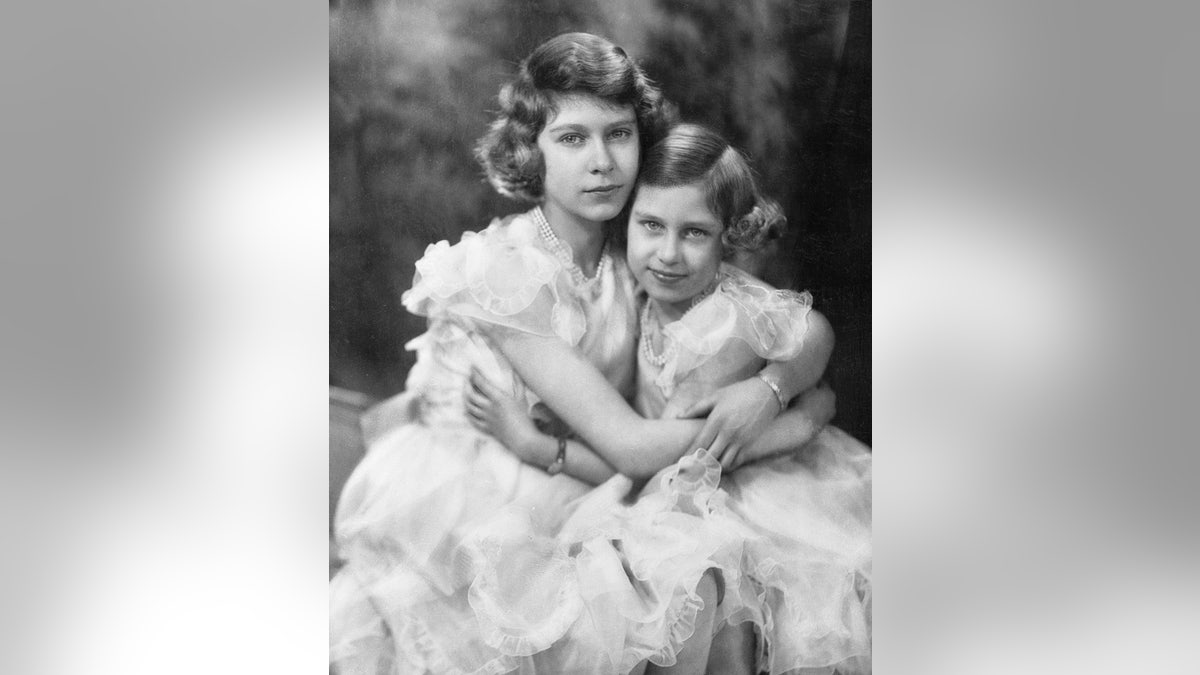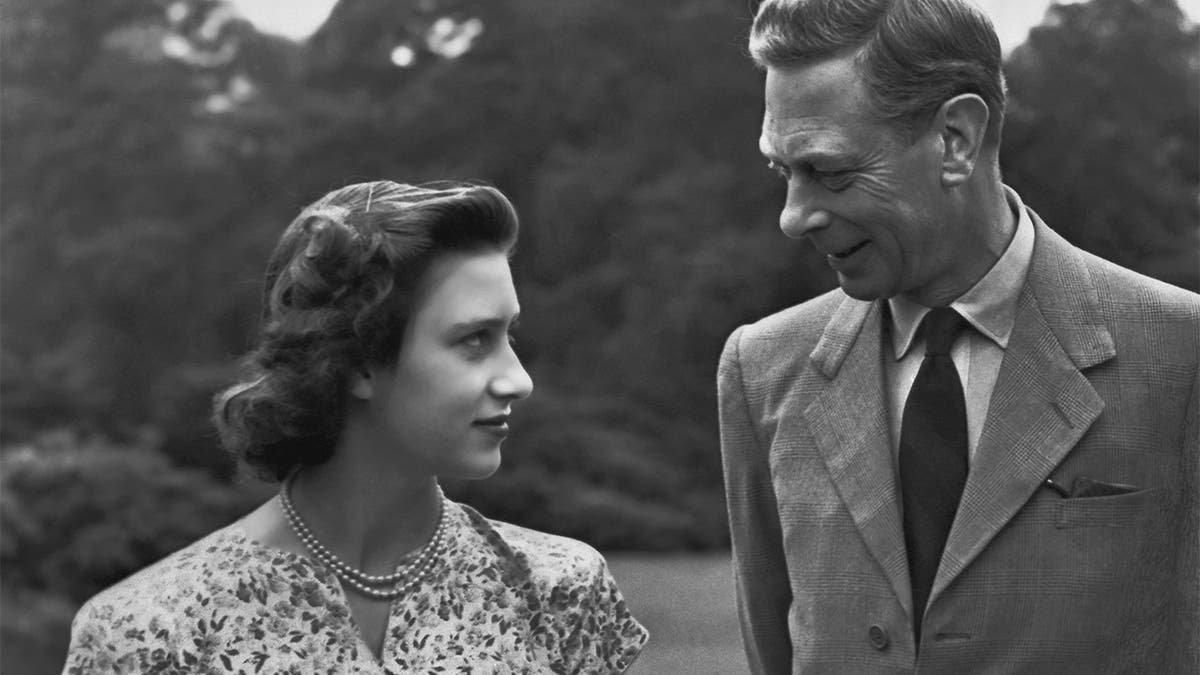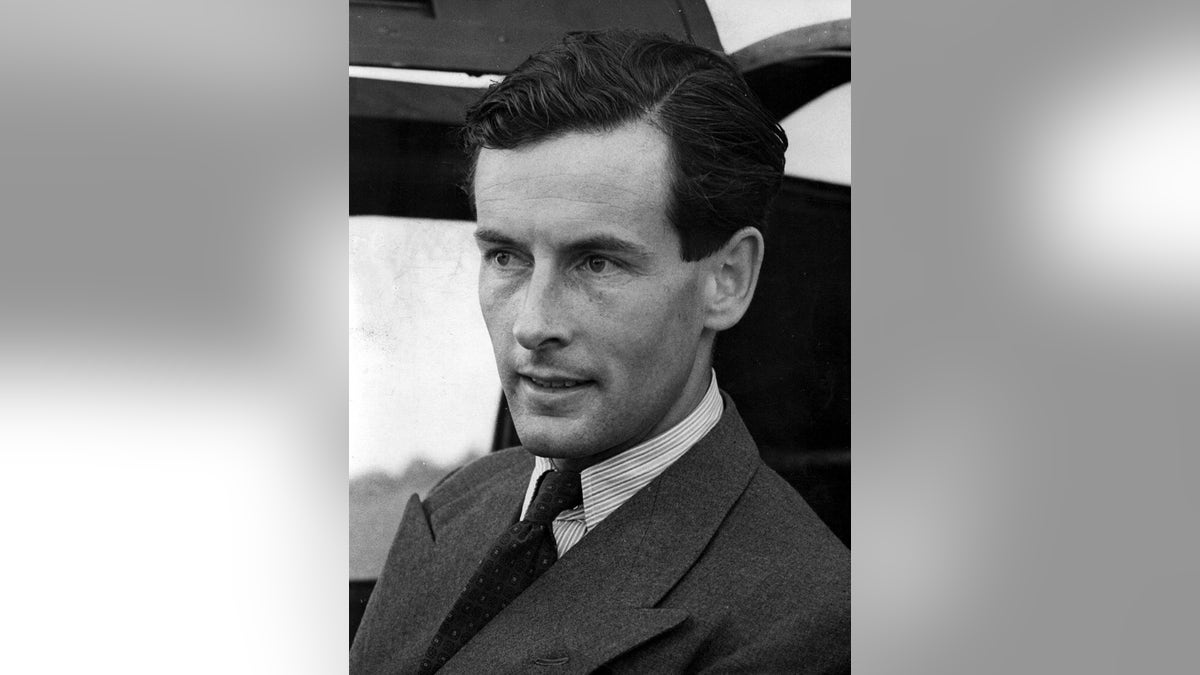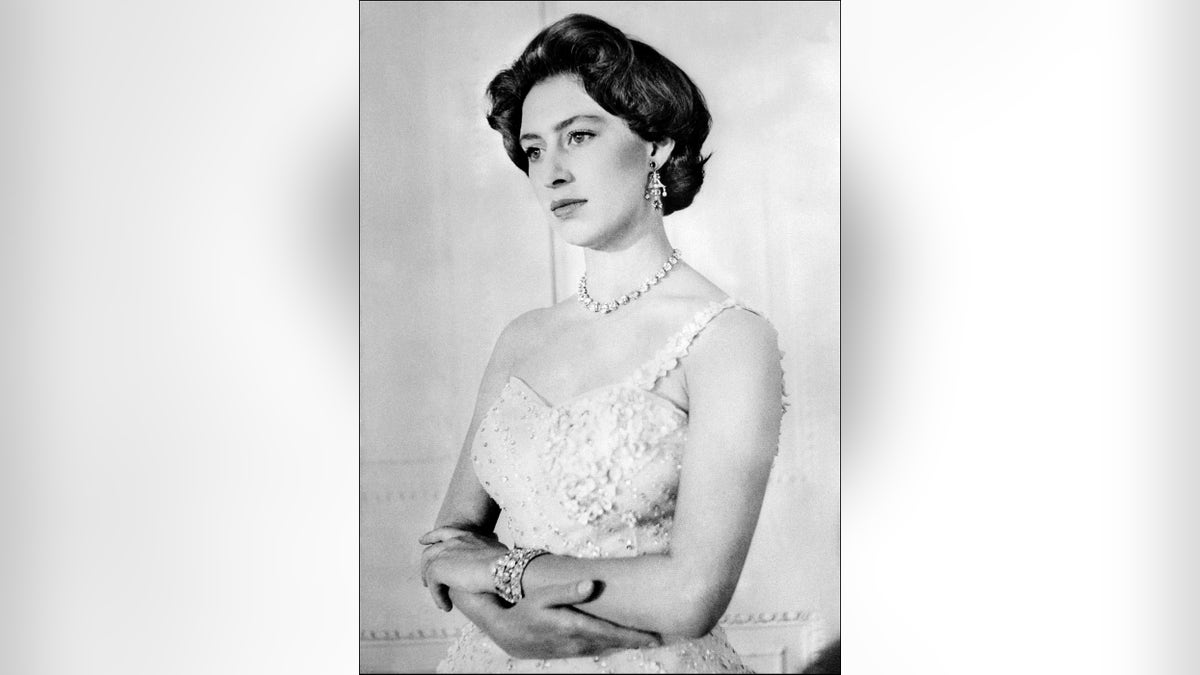Fox News Flash top entertainment headlines for June 27
Fox News Flash top entertainment and celebrity headlines are here. Check out what's clicking today in entertainment.
Being a royal "spare" comes with plenty of challenges no one is prepared for.
And as the sister of Queen Elizabeth II, Princess Margaret experienced just that.
Princess Diana’s biographer, Andrew Morton, recently penned a book about the late sibling titled "Elizabeth & Margaret: The Intimate World of the Windsor Sisters," which explores their fierce devotion for each other, and the tensions they endured along the way.
For his book, Morton was able to track down some of Margaret’s closest confidants, former palace aides, as well as numerous insiders who knew the women over the years. Margaret passed away in 2002 at age 71.

Before Prince William (right) and Prince Harry, it was Queen Elizabeth II and Princess Margaret. (Photo by Tolga Akmen - WPA Pool / Getty Images)
"So much focus has been on Princes William and Harry," the author told Fox News. "However, I wanted to explore the lives of these sisters who had a unique relationship that forever impacted the monarchy. They were incredibly close, yet like salt and pepper. To understand the queen, you need to understand Margaret, which gives a greater picture of the Windsors and their reign. It was a fascinating project, one that gave me a completely different perspective."
Despite their royal statuses, the women didn’t always face intense media scrutiny. When Margaret and Elizabeth were born, their father George VI, the second son of King George V, was Duke of York. While the public was fascinated by "the little princesses," the girls lived largely outside the public eye.
However, that all changed when their uncle, Edward VIII, abdicated the throne in 1936 and married Wallis Simpson, a divorced American socialite. This thrust their father onto the throne and set Elizabeth on an unexpected path to becoming the future queen of England.

Princesses Elizabeth (left) and Margaret. (Getty Images)
"Margaret was faced with struggles as a spare," Morton explained. "Every spare faces it, not just Margaret. The challenge is to find a relevant and meaningful role in life. That way you are not seen as someone standing in the shadow of somebody else, someone who is going to be king or queen. It’s difficult. And as you go down the line of succession, you become less relevant to the monarchy. There’s a pecking order and you’re suddenly at the bottom."
And then tragedy struck. Their father passed away in 1952 at age 56 from coronary thrombosis - a blocking of blood flow to the heart as a result of a blood clot in an artery.
"Margaret adored her father," said Morton. "Just trying to keep it together on a daily basis was a challenge. She was drinking too much. She was smoking too much. People were very concerned about her mental and physical health. As for the queen, as she said, she had a job. She was grieving, but she had a family, she had a support system behind her. And she had to take on this enormous role, which is becoming queen. The crown had to come first. But for Margaret, she was just absolutely devastated."

Princess Margaret (1930 - 2002) with her father King George VI (1895-1952) on the grounds of Windsor Castle in Windsor, England on July 8, 1946. (Photo by Lisa Sheridan/Studio Lisa/Getty Images)
However, love would soon be in the air. Margaret became enamored with Peter Townsend, a dashing World War II fighter pilot. But the romance was frowned upon when their engagement became public in 1953. The princess was 16 years his junior and he was divorced. They had known each other since he came to the palace in 1944 when she was a teenager and he was 29.
Amid a furor which reverberated through Britain and its Commonwealth of former colonies, the much-decorated war ace was banished from the palace on the advice of Prime Minister Sir Winston Churchill to a diplomatic post in Brussels.
The relationship survived, at least until 1955. That’s when Margaret, then aged 25, ended their engagement. Margaret needed the Parliament’s approval ahead of the marriage to Townsend and they made it clear they would not offer her consent, People magazine reported.
QUEEN ELIZABETH KEEPS RARE PHOTO OF MEGHAN MARKLE, PRINCE HARRY IN BUCKINGHAM PALACE

Peter Townsend, who was barred from marrying Princess Margaret in the 1950s, died in 1995 at age 80. (Photo by PA Images via Getty Images)
Margaret said that ``mindful of the church’s teaching that Christian marriage is indissoluble and conscious of my duties to the Commonwealth, I have decided to put these considerations before any others.″
``I have reached decision entirely alone,″ she added, ``and in doing so I have been strengthened by the unfailing support and devotion of Group Capt. Townsend.″
Townsend immediately left the country and married his second wife in 1959.
``She could have married me only if she had been prepared to give up everything _ her position, her prestige, her privy purse,″ Townsend wrote in his 1978 autobiography. ``I simply hadn’t the weight, I knew it, to counterbalance all she would have lost.″
PRINCE WILLIAM, KATE MIDDLETON TOLD PRINCE GEORGE HE'S THE FUTURE KING 'AROUND 7TH BIRTHDAY': REPORT

Princess Margaret, Queen Elisabeth's sister, during her 26th birthday. (STF/AFP via Getty Images)
Townsend passed away in 1995 at age 80.
"You have to remember, at the time the Church of England wouldn’t allow divorcees to marry in the church," Morton explained. "And the monarchy, as head of the Church, was also against divorce. It’s a challenge their uncle faced before he abdicated. And yet, the queen was prepared to allow Margaret to marry so she could be happy. She was prepared to accept any criticism, any attacks from the church and government, which is remarkable. She thought of her sister’s happiness. That’s how strong their bond was. But in the end, Margaret put duty before herself."
"But the reality is, that in marrying Peter Townsend, she’d had to give up everything," Morton continued. "Her relationship with the queen could be explosive. It was sometimes cantankerous and difficult. But they were always loyal to each other. And they were always loving towards each other. I think that’s what intrigued me the most, the fact that they learned so much from each other. In Margaret, Elizabeth realized that happiness is something we should all strive for."
CLICK HERE TO SIGN UP FOR THE ENTERTAINMENT NEWSLETTER

Princess Margaret and Antony Armstrong-Jones. The photographer later became Earl of Snowdon. They announced their separation in March 1976. When the marriage was officially ended two years later, Margaret became the first royal to divorce since Henry VIII in the 16th century. (Photo credit should read AFP via Getty Images)
In 1958, Margaret began seeing society photographer Antony Armstrong-Jones. They married in 1960 and welcomed a son in 1961. A daughter followed in 1964. But by the early ‘70s, the marriage was rocked by rumors of infidelity. They divorced in 1978. Margaret never remarried.
But through it all and despite completely different personalities, the sisters remained close over the years.
"In our family, we don’t have rifts," Margaret once said. "We have a jolly good row and then it’s all over. And I’ve only twice ever had a row with my sister."
Margaret never detailed what those two arguments were about.
CLICK HERE TO GET THE FOX NEWS APP

Queen Elizabeth II (left) and Princess Margaret remained close over the years. (Photo by Tim Graham Photo Library via Getty Images)
According to the palace’s official site, Margaret played an active role in the royal family’s public work and supported the queen. She was the patron or president of over 80 organizations, ranging from children’s charities to ballet companies.
But as a heavy smoker for many years, Margaret suffered repeated respiratory illnesses and even had a part of her lung removed in 1985. She also had a mild stroke in 1998. Shortly before her death, Margaret’s sight had been impacted by a stroke and she was confined to a wheelchair.
Buckingham Palace said Margaret died "peacefully" in 2002.
"I hope readers of my book will get a sense of who these women are," said Morton. "It’s a story that anyone with a sibling can identify with. It’s about understanding the complex dance between two sisters with different priorities, different paths. But in the end, they supported each other."
The Associated Press contributed to this report.







